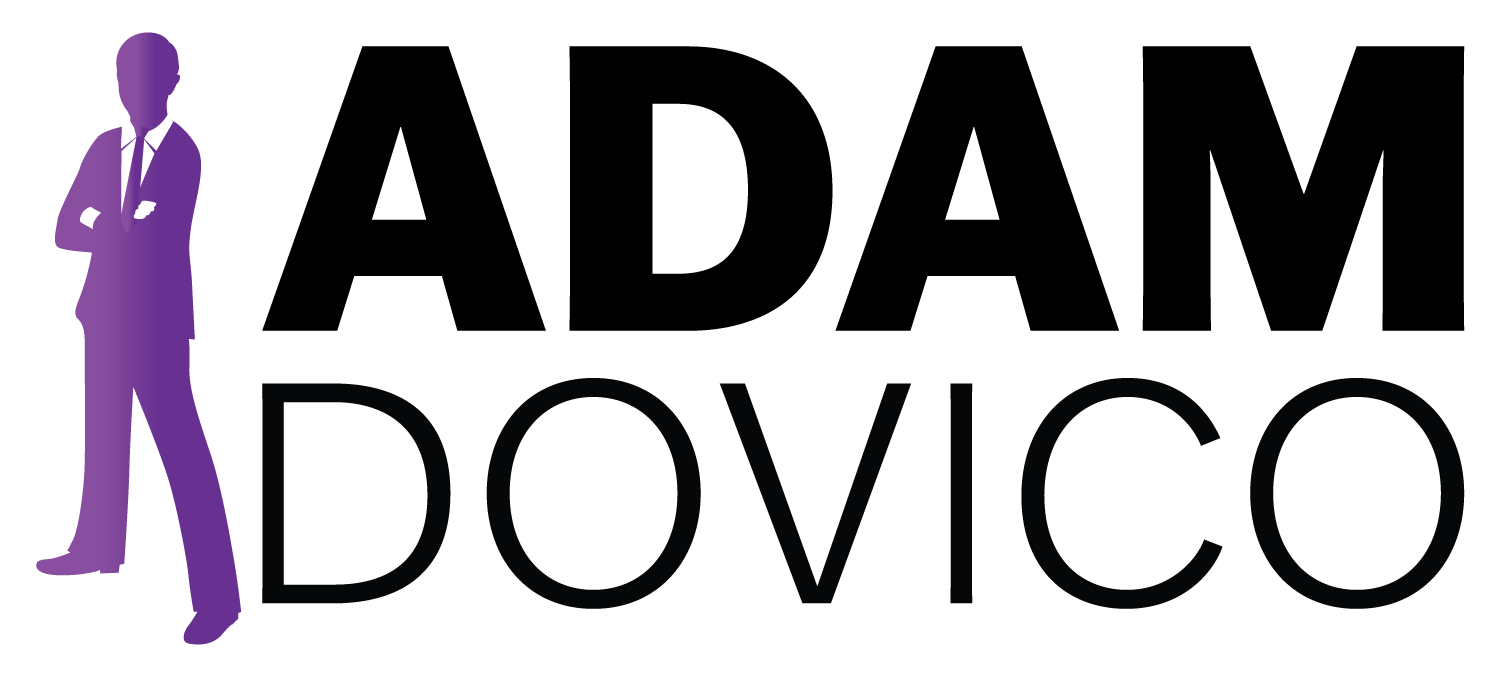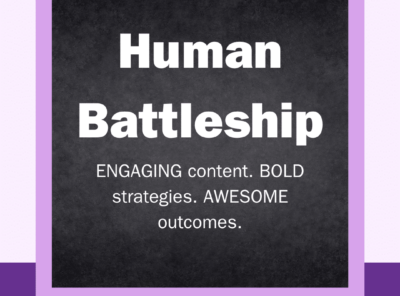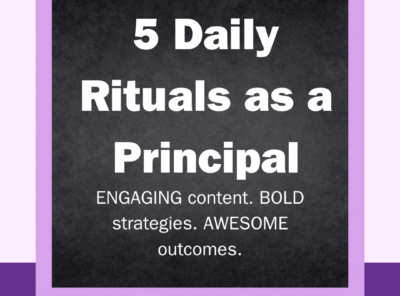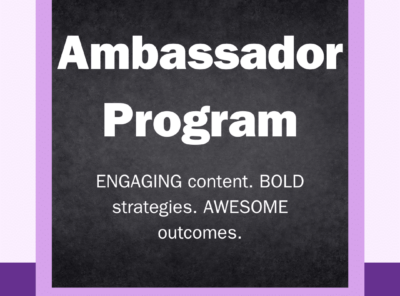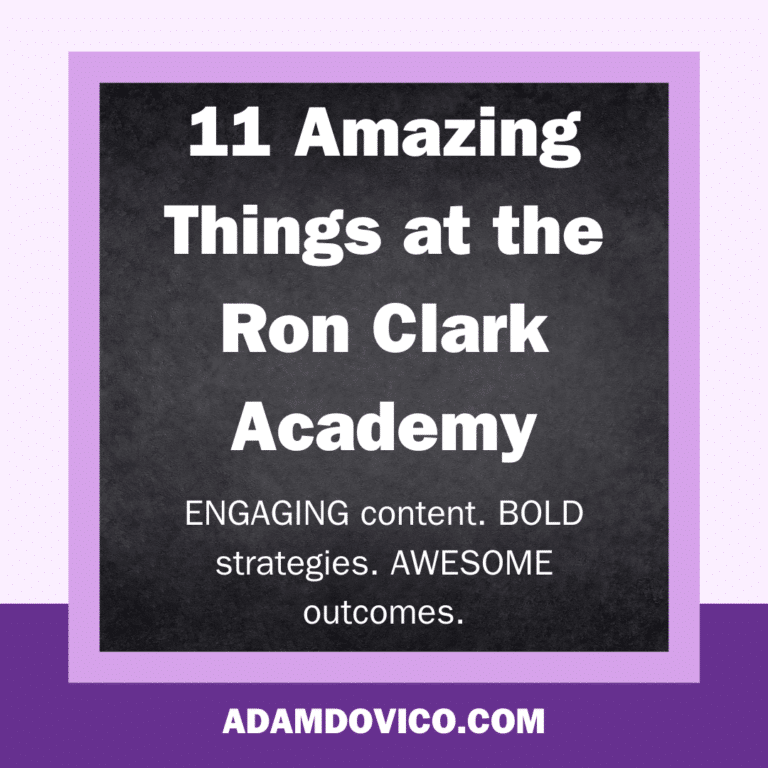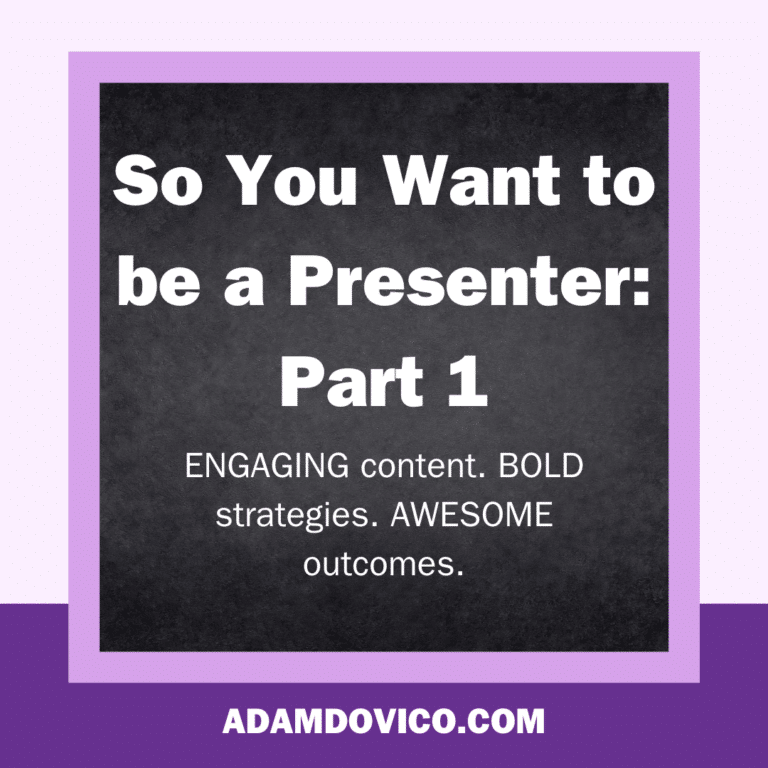So You Want to be a Presenter? Part 2
I recently wrote a blog for individuals interested in becoming a presenter. In Part 1, I aimed to give a few tips for how to enter the speaking world. And now in Part 2, I want to share how to be successful once you are booked for a gig and then up on stage. So without further ado, here are my top 5 tips:
1) Session vs. Keynote: Expectations differ when you are up on stage for various speaking engagements. You may be asked to present a session (sometimes called a breakout). In this case, you will likely have anywhere from 45-90 minutes to share a specific topic. In these cases, your job is to share knowledge, insight, strategies, or tips on that topic. It never hurts to make these sessions interactive, so even something as simple as “take thirty seconds to discuss how you would implement this in your classroom.” Depending on the size of the room and number of participants, you could have attendees make something (which may require materials), model, or move around. You may also be asked to do a keynote. In this case, you are likely going to have a larger audience, where the expectation will more likely be to inspire over inform. While you certainly want to have takeaways in a keynote, you want people leaving feeling uplifted, motivated, and “ready to go.” Usually you do not have people moving around much or interacting with each other during keynotes since they involve larger crowds, and it can be difficult to manage that. Since keynotes are usually the start or end of a conference, you want to ensure it is high energy so people feel excited to continue or wrap up their day.
2) Make It Stick: This is a reference to my favorite book of all time, Made to Stick by Dan and Chip Heath. In it, they discuss ways to make things “stick” with people, so after your presentation, people walk away recalling what you discussed. There are many ways to accomplish this, but one of my personal go-to approaches is storytelling. Storytelling is an age-old technique to communicate to others, and it helps people remember what you discussed. For example, if I simply say “to change school culture, you need to do something outside-the-box” versus telling you a story about the first day of school where we invited a band to play in our bus parking lot and invited parents to party with us while kids hula hooped and ran through bubbles, which do you think might stick better with you? Another approach to making things stick is to draw emotions from people. Laughter, happiness, fear, sadness are all emotional reactions that will draw people in. Closely related to storytelling, drawing emotions allows people to remember what you are talking about because they relate it to how they felt during it. Finally, things that are concrete make ideas stick. When you’re sitting in a workshop, would you rather hear about an abstract idea or see what it actually looks like? When possible, having attendees see, feel, or experience something that you are discussing is far more powerful than just saying it. For example, when I do my data workshop, instead of just talking about what to do with data, I give attendees actual data to view, analyze, and discuss, making the process feel more authentic and hopefully stick!
3) Read the Room: EVERY audience is different. Sometimes they’re on the edge of their seat, other times it feels like you’re talking to skeletons. There are many different things that can factor into this: time of day, purpose for people being there, what came before you, etc. You can do the same presentation 100 times to 100 different groups, and it will feel different every time. It is important when up on stage to read the room. If it is an audience that is hanging onto every word you say, you may want to “ham” up your act even more to keep them going. If they are dead, you may need to get them up and moving (even if that was not in the original plans). One of my strategies when presenting is to find a person or a table that is really engaged. I will usually make my way over to them when I have a good joke coming up and make sure that when I tell it, I am right next to them, because I know that they will likely laugh. If I can get them to laugh hard enough, others usually follow suit.
4) Manage Time / Be Flexible: Admittedly, I am type A. Time is very important to me, but I have come to realize that not everyone sees time the same way I do. As a result, sometimes the amount of time you thought you were going to have to present gets cut. Recently, I was doing a keynote for a district and had an hour to speak. The person who was introducing me decided to have a little monologue of his own, so sixty turned into 45 minutes. The moral of the story is be flexible! One way that I do this is to “chunk” my presentations. I segment things into usually about 10-15 minute sections, so if I need to take something out, I can simply condense or omit that section. You do not need to get through every single thing on your slides. I repeat, you do not need to get through every single thing on your slides. Quality over quantity.
5) Learn, Don’t Memorize: As a beginning speaker, it may be tempting to have index cards or print outs of your slides. I highly discourage this practice, as it leads to having a crutch that almost 100% of the time gets used. I also see some presenters trying to recite a memorized speech. I also discourage this, as it comes off as forced and unnatural. Instead, aim to “learn” your material. Chances are if you are presenting on it, you know the content, so let it flow. People are inherently more engaged when you are connecting with them (eye contact, proximity) versus reading off of a slide or an index card. Again, having stories and examples help with this because it is lived experiences that you are simply retelling. This extends to your slides (if you use them). Try to avoid having too much text on a slide, and by all means, please do not read verbatim what is on the slide. Expand, explain, or provide examples of what is stated there.
In conclusion, presenting is an awesome opportunity to contribute to our field. You are sharing information that will help others. Remember, it is a responsibility as well. Be open to feedback, aware of outdated practices, and current on your research. After over a decade, I am still learning something new with every presentation I do.
